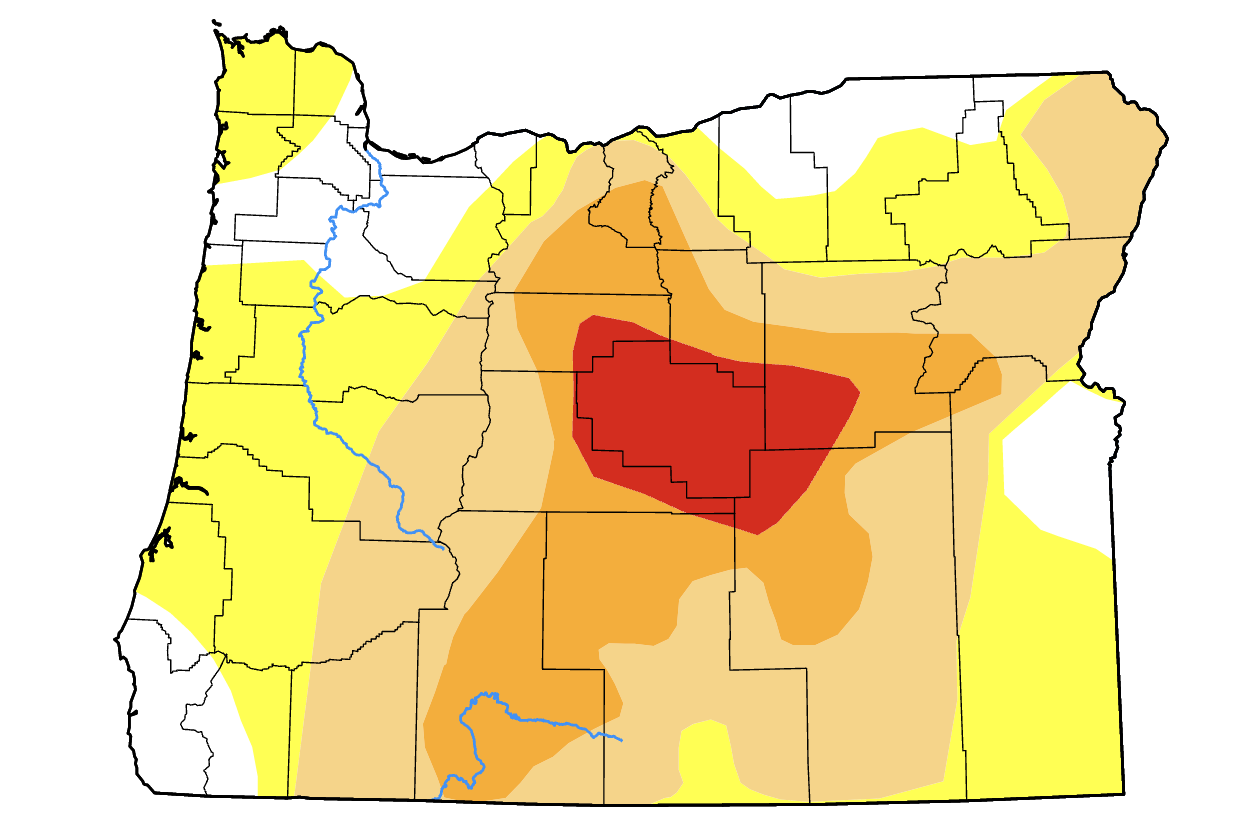THE DALLES, OR -- Governor Tina Kotek declared a drought in Wasco County through Executive Order 23-10, and a drought in Harney County through Executive Order 23-11, Wednesday, and is directing state agencies to coordinate and prioritize assistance to both regions. Drought declarations provide water users access emergency tools, including financial assistance, and allow the Water Resources Department to expedite review processes and reduce fee schedules.
With 23% of the county in moderate drought (D1) and 49% in severe drought conditions (D2), the U.S. Drought Monitor classifies Wasco County as being in abnormally dry to severe drought. Kotek's office says conditions have worsened since the beginning of water year 2023, with an approximately 40% increase in area coverage of severe drought conditions (D2). Water year precipitation for Wasco County has measured well below average, with nearly the entire county receiving between 25 – 75% of average precipitation, according to the National Weather Service. Overall, streamflows have been below average due to low precipitation and Wasco County is averaging 64% of the long-term average streamflow over the water year to date. While snowpack is well above average in the Hood-Sandy-Deschutes Basin, the dry soils will first be replenished by snowmelt when it occurs, limiting the amount of runoff available to translate into streamflow. Soil moisture profiles continue to measure near historical dryness for much of Wasco County.
In Harney County, the Governor's office says forecasted water supply conditions and precipitation levels are not expected to improve and nearly all of Harney County is experiencing drought conditions with a portion of the county experiencing extreme drought conditions (D3). Additionally, Harney County is averaging just 55% of the long-term average streamflow over the water year to date, while the Malheur Lake Basin as a whole is measuring 71% of average. While snowpack is well above average in the Harney Basin, the streamflow forecast for the Silvies River is projected to be well below average (76%). Drought is likely to have a significant economic impact on the farm, ranch, vineyard, recreation, tourism and natural resources sectors, as well as an impact on drinking water, fish and wildlife, and important minimum flows for public instream uses and other natural resources dependent on adequate precipitation, stored water, and streamflow in these areas. Extreme conditions are expected to affect local growers and livestock, increase the potential for fire, shorten the growing season, and decrease water supplies.
As state and local officials coordinate with federal partners, conditions in each region will be closely monitored by the state’s natural resource and public safety agencies, says Kotek's office, including the Oregon Water Resources Department and the Oregon Department of Emergency Management, the Oregon Office of the State Fire Marshal, and the Oregon Department of Forestry’s Fire Protection Division.




